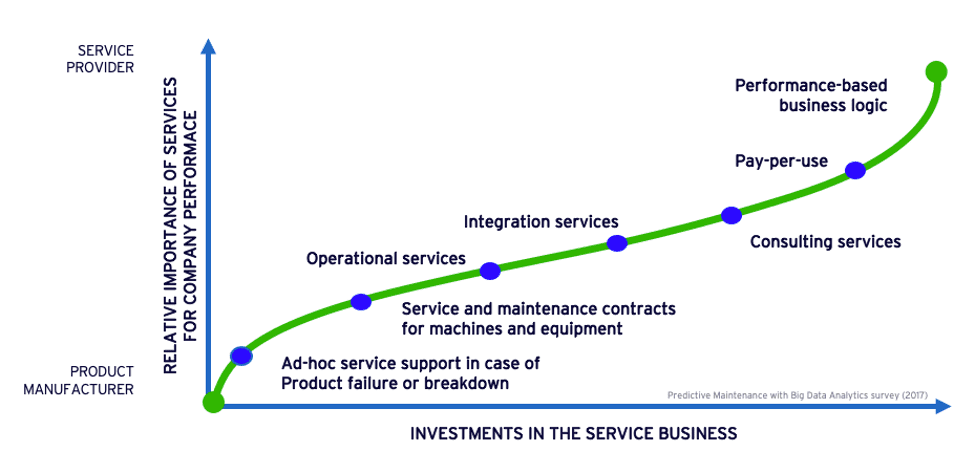It is no big secret that service revenue streams are profitable. Thus, it is to be expected that many CFOs are the driving force behind their organizations’ service revenue growth ambitions—especially when margins on product sales are dwindling. And indeed, we see the majority of today’s CSOs having a revenue target. This is where real transformation starts.
Since service has historically been a cost-center, practically all CSOs know how to drive cost reductions in the service delivery process. But when it comes to driving revenue, CSOs are less clear on how to do it. The following five steps will help you identify new revenue streams and ultimately improve your customer experience.
1. Understand the Voice of the Customer
In 2012, I was responsible for selling service contracts for a division of a €60 billion family-run German company. Because my targets were revenue-based, my role was moved from the service domain to the sales domain. The CRO asked me how I would achieve my goals and what marketing budget I needed. I said I would first build the delivery capability and then go for the marketing budget. How naive I was.
How could I know what capabilities to build without understanding what customers really value? Without ever having put a lot of thought into my current services portfolio, my service revenue stream was more a bookkeeping metric than a conscious business driver. Under the services heading on my website, I saw the usual suspects: installation services, periodic maintenance, spare part sales, and a helpdesk for break-fix scenarios.
Remembering the words of the CRO; how did I market these offerings? Well, beyond the website, I didn’t. It made me aware that I needed the voice of the customer. And when I asked, the answer was really simple; customers expect their assets to work. They want to maximize uptime while at the same time minimizing operating costs.
2. Sell the Value of Preventive Maintenance
I’d guess that preventive maintenance is a significant portion of your service revenue stream. But what if your customer starts questioning your rationale of ‘preventing’ and how those activities link to the achieved uptime? What if the procurement department of your customer pressures you to reduce the maintenance cost?
In our previous blog on how to sell customers on the value of preventive maintenance, we showed how value recognition of service delivery is moving from the actual execution to the insights you can provide. Sure, the service work needs to be done, but beyond fixing the asset, you have to ‘fix’ the customer. So, if you perform periodic maintenance, try to shift your focus to the reporting and interpretation/communication of what the outcome means to the customer.
A customer may respond with:
- Did you find any anomalies during PM and what impact do those have?
- Do I need to reserve any additional budget to keep the asset going?
- How can I improve the performance of the asset?
3. Move Beyond Reactive Services
Considering revenue streams based on reactive type services are in jeopardy, the way forward is offering services that focus on the output and outcome of the asset. This implies that you have to change your paradigm from a product focus to a customer focus. At the core of your service delivery is not the product, but how your customer is using it. It makes a big difference if the same product is used intermittently at a 25% utilization versus a 24/7 usage at 99.x%.

The key to selling uptime and performance-based services is your understanding of the ‘cost of downtime’ of your product in the context of its use. Thus, we’re back at the voice of the customer.
4. Leverage Penalty Clauses
A great way to engage in a value conversation with your customer is the topic of penalty clauses. I love them! Not because I, and my CFO, like to include the penalty liabilities into a service contract, but because penalties are a surrogate for something that is important to your customer. Try to discover the ‘why’ behind a penalty clause and focus on the mitigation of that reason. You may discover new types of services you can sell.
My guess, it’s all about the availability of the machine. Apply more curiosity and your customer will tell you when that availability matters and when it does not. Even a 99.x% utilization will have ‘blackout’ windows allowing you to perform the necessary service activities without the stress of over-dimensioning your service delivery organization.
5. Sell First, Then Build Delivery Capability
Going back to my CRO. On a continuum of potential services, I could offer a full range from reactive to proactive, from product to usage-based services. In the end, the determining factor is not me as the seller of the services. It’s all about the buyer of services. My CRO ‘cured’ my naivety. I first listen to my customer and sell what they want. Then, if I have a state-of-the-art and flexible service execution platform, I do not need to worry about the service delivery capability being able to catch up.
Learn more about ServiceMax’s field service management platform here.


Share this: